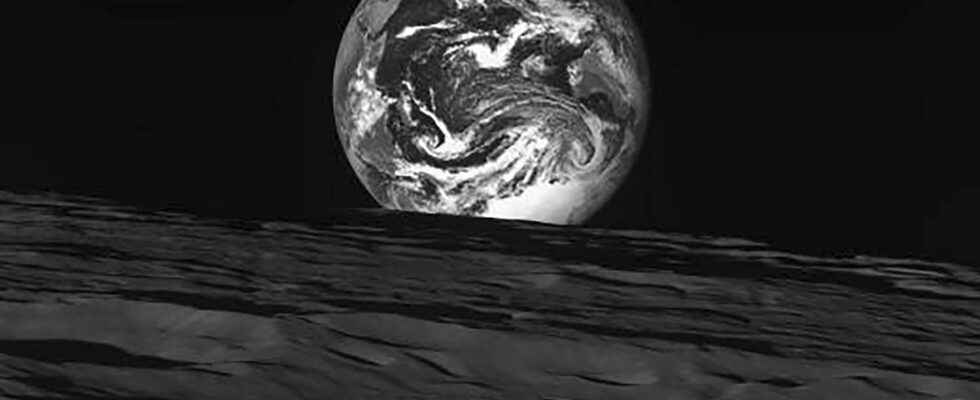EARTH. The South Korean Danuri probe placed in orbit around the Moon has transmitted its first images. Captured at the end of December 2022 by a high-resolution camera, his shots of our planet Earth are spectacular.
[Mis à jour le 11 janvier 2023 à 13h21] Launched on August 5, 2022 aboard a SpaceX Falcon 9 rocket, the Danuri probe is the first South Korean probe to fly to the Moon. After a journey of several months to reach its destination, the probe is now in orbit around our natural satellite. She recently transmitted her first photos of the Earth and the surface of the Moon. The Korea Aerospace Research Institute (KARI) posted the images on social media.
The Danuri mission has different objectives. It must on the one hand make it possible to test space technologies and on the other hand to find a landing site for a robotic lunar mission which could take place by 2030. The probe is equipped with several cameras and instruments which will allow him to study the lunar surface throughout his mission. The Danuri probe should collect information on the composition of the ground as well as on the history of the magnetic field of our natural satellite. She also takes with her a camera provided by NASA which should allow her to identify areas containing water ice at the south pole of the star.
The South Korean space agency has published photos transmitted by the Danuri probe. Captured between December 24, 2022 and December 1er January 2023, these images of remarkable quality were obtained using the high-resolution LUTI camera on board the probe. This first photo was taken at an altitude of 344 kilometers above the Moon.

The second image was captured by the probe’s camera when it was only 124 kilometers above our natural satellite. As in the first photo, we can see the lunar surface marked with craters resulting from the collision with meteorites as well as the Earth located in the background.

What images of the Earth published by NASA?
Thanks to the various probes sent through space and the multiple satellites placed in orbit around the Earth, space agencies around the world offer photos of the Earth. NASA recently presented the first snapshot captured by GEOS-18, a weather satellite launched on March 1, 2022 to monitor weather conditions and hazards on the West Coast of the United States and in Alaska.
The images provided by satellites allow scientists to study many phenomena such as forest fires, the movement of storms or even to observe the evolution of glaciers threatened by climate change. Thus, on May 17, the NASA Earth Observatory unveiled an unprecedented image of the eruption of an underwater volcano located in the Pacific.
The International Space Station also produces unique images of our planet like this image of storm Sam over the Atlantic Ocean in September 2021:
It has long been impossible to observe the Earth other than through the photos published by NASA and by astronauts on board the International Space Station (ISS). Today, the technologies at our disposal make it possible to obtain images of an ever-improving quality of our planet more and more quickly. Thus, the ISS proposes a live permanent thanks to the cameras placed on the station. It is thus possible to observe the Earth from the station, but also to locate the ISS in real time.
What are the characteristics of planet Earth?
Earth is the 3e planet from Sun. Just like its neighbors Venus and Mars, it is a telluric planet. It is therefore made up of rocks and has a solid surface on which we can evolve, unlike gaseous planets like Jupiter or Saturn. Seen from space, our planet has an intense blue color because of the large amount of water present on its surface.
Planet Earth is the largest terrestrial planet in the solar system ahead of Venus, Mars and Mercury. It is also the densest planet in the solar system. But what makes Earth special is that it is the only planet known to harbor life. The appearance of life was possible thanks to a certain number of conditions such as the presence of liquid water, an atmosphere which maintains a livable temperature, but also a magnetic field which protects the surface of the planet against electromagnetic radiation emitted by the Sun.
How big is the Earth?
Planet Earth has a diameter of 12,742 kilometers. In the solar system, only Mercury, Venus and Mars are smaller than our planet. Earth is 2.6 times larger than Mercury and 10 times smaller than Jupiter.
What is the radius of the Earth?
The radius of the Earth is measured from the center of the planet’s core to the Earth’s crust. Its length is 6,371 kilometers. Its diameter is therefore twice as large: 12,742 kilometres.

